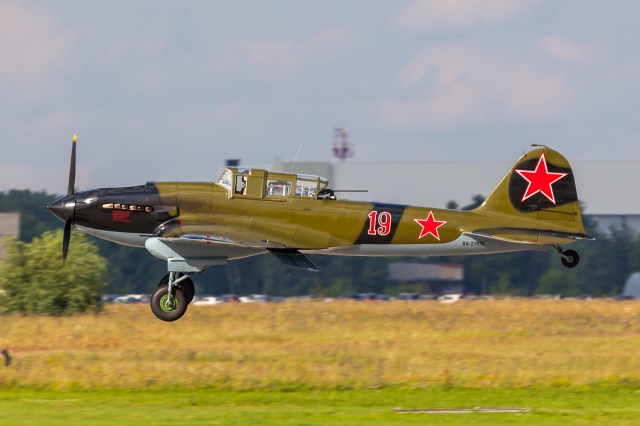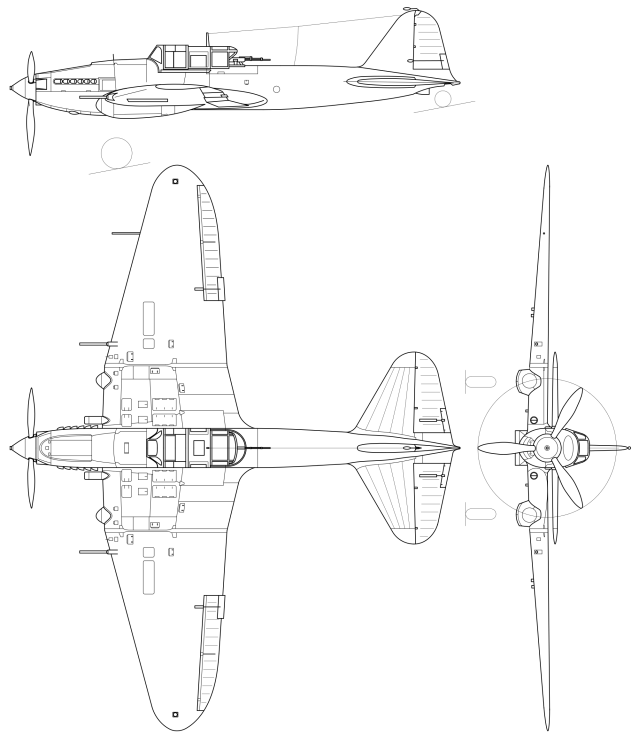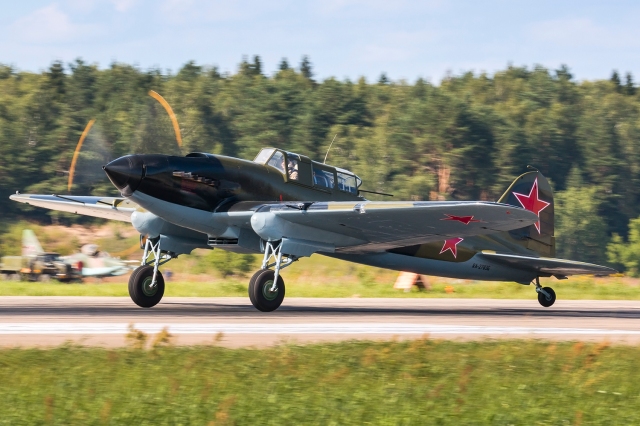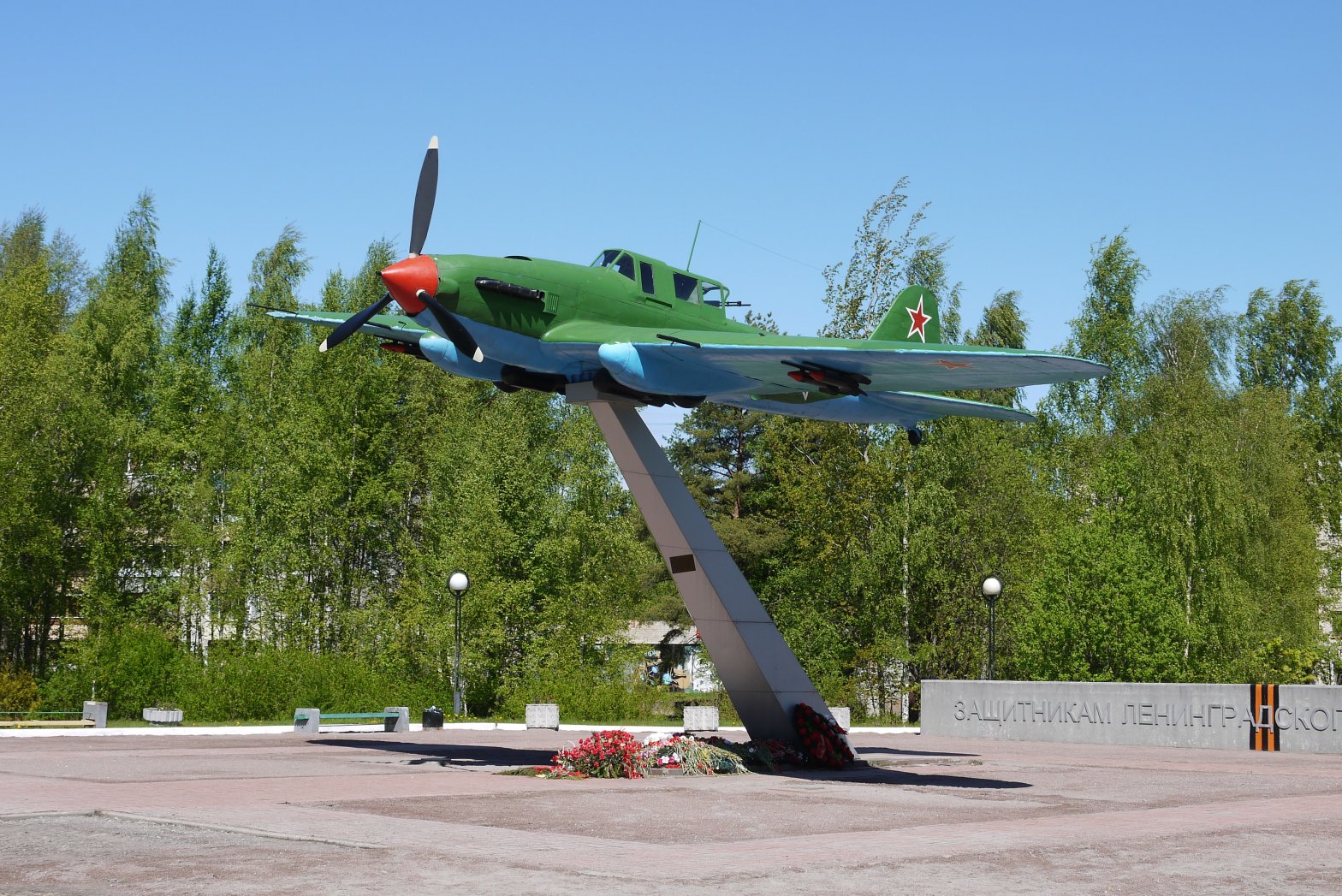General Overview
The Il-2 is a Soviet Union built ground attack aircraft produced during World War 2. The Il-2 is the most produced military aircraft in aviation history, as well as one of the most produced piloted aircraft, with 36,183 aircraft built. Combined with it’s successor the Il-10, making a total of 42,300 aircraft built.
To soldiers on the ground, the Il-2 was known as the “Hunchback”, “Flying Tank” or the “Flying Infantryman”

Start of Service Prototypes
The Idea of a Soviet armored ground attack aircraft dated back to the 1930s with the designs of the TSh-1 and the TSh-2, but engines at the time lacked the power needed for this type of heavy aircraft. The Il-2 prototype, the TsKB-55, was designed by the CDB (Central Design Bureau) in 1938 and standing loaded weighed more than 4,700 kg (10,300 lb) with the armored shell making about 15% of that weight.
On the 2nd October 1939, the prototype TsKB-55 made its first flight winning the contract over the Sukhoi Su-6 and received the designation of BSh-2 (Bronirovani Shturmovik). The main problems with the BSh-2 was that it was overweight and under-powered, as its Mikulin AM-35 engine was built for high altitude performance and produced 1,370 hp.
With the under-performance of the BSh-2 the aircraft was redesigned as the TsKB-57, which was a lighter single-seat design and coupled with a Mikulin AM-38 engine producing 1,680 hp which was designed for low altitude performance. The aircraft flew on 12 October 1940 and passed the State Acceptance trials in 1941 and designated the IL-2 in April that year.

Usage and Variants
The Il-2 was used for a variety of roles but its main use was Ground Attack. All but one of the main Il-2 variants was used in this way, which was the Il-2T, the torpedo variant. This had its main guns removed to save weight and added the capability of carrying one 45cm torpedo.
Operation History
The first use of the Il-2 was by the 4th ShAP (Ground Attack Regiment), days after the german invasions began. The aircraft entered service so quickly that the pilots had little to no training and the training received to only takeoff and land. The result was none of the pilots learning tactic or even firing their guns before their first combat sortie. In the first 3 days of service out of the 294 aircraft available in June 1941, 10 Il-2 were lost to enemy action and another 19 to other causes.
Due to the lack of training, Il-2 pilots struggled with the aircraft, but as they gained combat experiences their tactics improved. Unlike when they first flew the aircraft where they used a low horizontal straight approach at 50m altitude, they adopted a technique of keeping the target to the pilots’ left and using a left turn with a shallow 30 degree dive in an echelon approach of four to twelve aircraft each time.
The capabilities of the aircraft are hard to determine as all evidence comes from existing documentary work. One piece mentions an engagement in the Battle of Kursk on the 7th of July 1943 where 70 tanks from the German 9th Panzer Division were claimed to be killed by the Il-2s in 20 mins.
Other studies found that at Kursk, very little German armoured losses were by Il-2 or other air attack. During the Battle of Kursk VVS Il-2s claimed the destruction of no less than 270 tanks in 2 hours aginst the 3rd Panzer Division. However sources say the 3rd Panzer Division only had 90 tanks total which is 120 less than the amount claimed to be killed.
Through all the details and claims, one thing is true, the Il-2 wasn’t named the Flying Tank for nothing. Due to Heavy Armour and large firepower the aircraft was a formidable opponent. A tactic used during the Battle of Kursk was the circle of death where up to 8 Il-2 created a moving circle so that each trailing aircraft could cover the one in-front with its weapons creating a defensive circle. Every now and then an aircraft would leave the circle to make a strafing run with its guns, then return to the circle allowing the next aircraft to make his run.

| Il-2M3 | |
| Power Plant | 1 × Mikulin AM-38F liquid-cooled V12 engine, 1,280 kW (1,720 hp) (takeoff power),1,100 kW (1,500 hp) at 750 m (2,460 ft) |
| Top Speed | 410 km/h (250 mph, 220 kn) at 1,500 m (4,900 ft) |
| Cruising Speed | 275 km/h (171 mph; 148 kn) |
| Max Altitude | 4,525 m (14,846 ft) (service ceiling), 6,360 m (20,870 ft) (absolute ceiling) |
| Range | 765 km (475 mi, 413 nmi) at 1,000 m (3,300 ft) |
| Time to Altitude | 15 min to 5,000 m (16,000 ft) |
| Bombs | 8× RS-82 rockets 4× RS-132 rockets 6× 100 kg (220 lb) bombs in wing bomb-bays and underwing or 4× dispensers for 48 2.5 kg (5.5 lb) PTAB anti-armour bombs (192 total) in wing bays |
